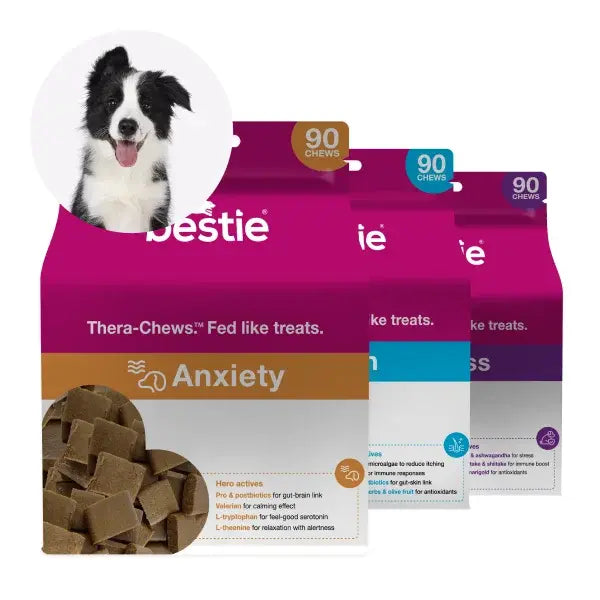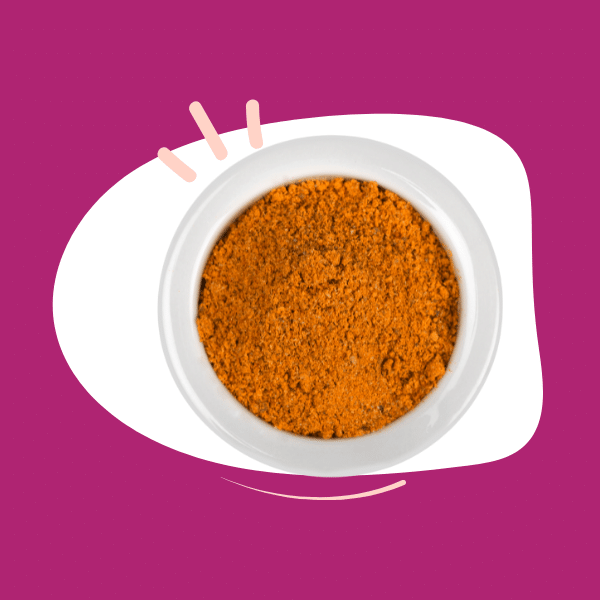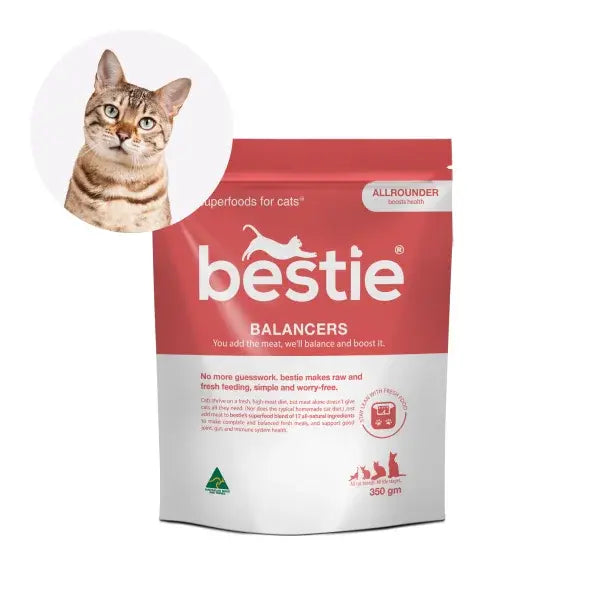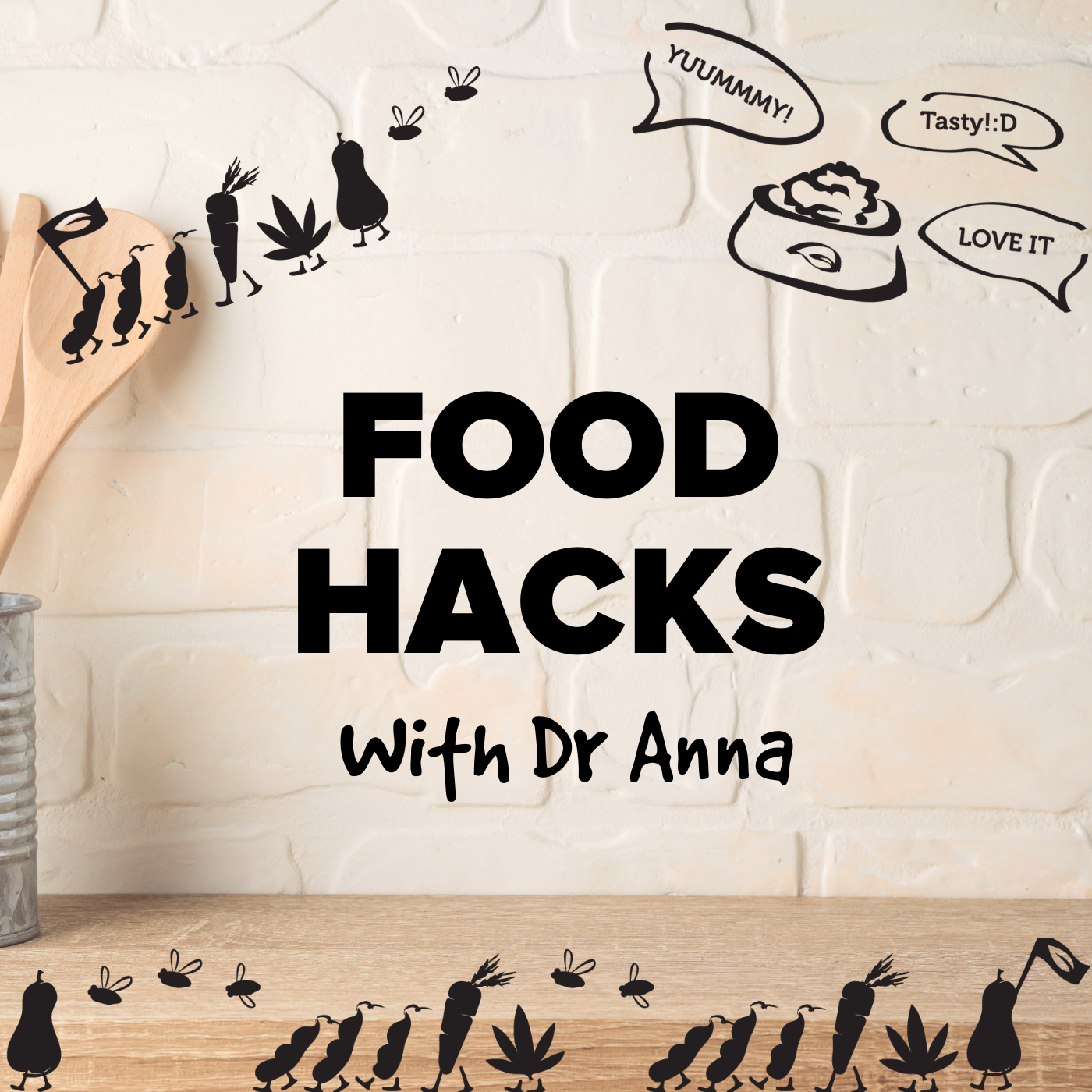Despite how we feel about them, dogs aren’t little humans. Here’s a simple guide to the basics of dog nutrition.
There’s a lot written that suggests that dogs are carnivores and therefore entirely meat eaters. That isn’t strictly true. In fact, dogs and cats are members of the biological order Carnivora, but while cats are what's known as obligate carnivores (we explain that more here), dogs are omnivores. This means they’ve evolved to eat a lot of meat and some plant material.
The dogs’ diet, and in particular the macronutrients — carbohydrates, protein and fat — are what gives our dogs the energy to run after the ball, lie around on the couch, breathe, digest, sleep and poo. The amount of energy they need, depends on the dog’s age, activity level and other factors.
However, when it comes to the amount of energy in the food you feed him, things get a little tricky. Firstly, the energy in dog food that’s available to the dog after that lost in weeing, pooing and farting, is known as Metabolisable Energy (ME). Expressed as kilocalories per kilogram (kcal/kg), ME indicates the amount of digestible energy in the food. The higher the ME, the more energy in the food, and the less you need to feed of it.
The ME can be calculated using the Atwater Factor, a value determined by multiplying the percentage digestibility by the energy value. (And with a factor of 8.5, fat packs more of an energy punch than protein or carbohydrate.) Simply multiply the percentage of fat, protein, and carbohydrate by the respective Atwater Factors, add together, and multiply by 10.
| NUTRIENT | % Digestibility | Energy value (kcal/gm) | Atwater Factor (kcal/gm) |
| Fat | 90% | 9.4 | 8.5 |
| Protein | 80% | 4.4 | 3.5 |
| Carbohydrate | 80% | 4.15 | 3.5 |
However, what the ME number doesn’t tell us is the amount of carbohydrate, protein and fat in the food. Two foods could have the same ME but different amounts of protein — and carbs.
In fact, when it comes to carbohydrates, research shows that the ‘gluconeogenic capacity’ of a dog’s liver and kidney is adequate to supply their needs for glucose — even as puppies (1). That means dogs have no nutritional requirement for dietary carbohydrates. High levels of dietary fibre, will increase food volume while decreasing energy content.
Several studies (2,3) show that high-protein, low-carbohydrate diets for dogs, promote greater weight loss while also maintaining lean muscle mass, than high-carb and high-fibre diets.
In summary, key things to remember are that:
- Fat delivers most of the energy a dog needs, as well as essential fatty acids.
- Protein provides essential amino acids.
- Dietary carbs aren't needed.
- The remainder of the diet needs to provide essential minerals, vitamins and water.
KING OF THE NUTRIENT PILE: PROTEIN
Dogs need a lot of protein, and protein from meat sources is particularly digestible for dogs. But what do proteins really give our dogs?
Proteins are made up of chains of amino acids, and dogs need 22 of them to stay healthy and alive. Amino acids are either essential, in that they can’t be produced during metabolism by the body and must be provided by diet, or non-essential, in that they can be produced in the body from other proteins.
Once absorbed into the bloodstream, amino acids can be used to form new proteins that help build muscle, repair tissues, create enzymes and hormones, transport oxygen and iron in the blood and support immune function. Proteins are also a source of energy and a major component of hair, skin, nails, ligaments, tendons and cartilage.
What amino acids do dogs need?
While human adults need eight essential amino acids, dogs need 10. However, not all proteins are equal. Proteins from animal sources provide the highest quality protein; plant proteins don’t provide all the amino acids a dog needs in the right proportions.
Not only that, but the availability of amino acids each protein supplies can be different; that’s known as biological value. For example, eggs have a biological value of 100, beef, 80 and wheat, 55.
The digestion coefficient expresses how the protein is best utilised in the body, and it depends on the protein source as well as how it’s processed. For example, protein from raw red muscle meat is highly digestible, around 94% compared to the digestibility of 78% in beans and 86% in whole wheat (1).
In a research study done with adult Beagles, comparing commercial diets and fresh mince, the fresh mince had a significantly higher digestion coefficient than the commercial diets. (2)
What about water? Water is essential for your dog’s healthy diet. It helps eliminate waste from the body, regulates body temperature, and transports nutrients. Always have water freely available.
However, if you’re feeding fresh protein, along the lines that we’ve recommended here, about 70% of that protein will be moisture. If you’re sticking with kibble, your dog needs even more water, to help with digestion.
ALSO SUPER IMPORTANT FOR DOGS: MICRONUTRIENTS
What fatty acids do dogs need?
As we’ve seen, dietary fats provide the most concentrated source of energy for your dog. However, they also supply essential fatty acids that act as carriers for important fat-soluble vitamins. Fatty acids play a role in cell structure and function.
In particular, dogs, like most other mammals, have a dietary need for polyunsaturated fatty acids of the omega-6 series. For example, an omega-6 deficiency is due to a lack of dietary linoleic acid. The signs of that efficiency are skin lesions, dermatitis, retarded growth, increased metabolic rate and reproductive capacity, among other effects (4).
A deficiency in omega-3 is due to a lack of alpha-linoleic acid. The signs and metabolic role are less defined.
What vitamins do dogs need?
When it comes to vitamins, dogs need the following vitamins from the diet, in various amounts: vitamin A, vitamin D, vitamin E, thiamine, riboflavin, pantothenic acid, niacin, vitamin B6 (pyridoxine), biotin, cobalamin, folic acid and vitamin K.
These vitamins have a variety of roles. For example, thiamine helps regulate energy
and carbohydrate metabolism, and activates ion channels in neural tissue. Vitamin B6 is responsible for glucose generation, red blood cell and nervous system function, hormone regulation, immune response, niacin synthesis, and gene activation. Pantothenic acid helps with energy metabolism. Folic acid plays a role in amino acid and nucleotide metabolism and in mitochondrial protein synthesis.
What minerals do dogs need?
There are 12 essential minerals for dogs. Calcium and phosphorus are crucial to
strong bones and teeth but they need to be in the right ratio. Dogs need magnesium, potassium, and sodium, for nerve impulse transmission, muscle contraction, and cell signalling.
They need iodine for normal thyroid function and zinc for normal bone and cartilage development. Many minerals that are present only in minute amounts in the body, including selenium and copper, act as helpers in a wide variety of enzymatic reactions (5).
Natural vs synthetic vitamins and minerals?
While synthetic vitamins can have the same chemical constituents as natural ones, debate is still ongoing as to whether they’re as ‘bioavailable’ or effective.
For example, natural vitamin E is a collection of eight chemically unique compounds that are derived from plants, including four tocopherols and four tocotrienols. The less expensive, synthetic vitamin E is one compound – alpha-tocopherol.
Holistic Dr of Vet. Medicine Dr Jane Bicks, cites a number of studies that show that the synthetic form of vitamin E is not as active or easily absorbed as the natural form of vitamin E (6).
Not only that, but most vitamins in supplements are made or processed with petroleum derivatives or hydrogenated sugars (7). Finally, proponents of ‘food synergy’ believe that whole ingredients may provide health benefits that the individual fractionated ingredients or single nutrients cannot provide (8).
If ultra-processed food is not so good, and fresh is better, is it just a simple matter of making homemade dog food? There are pitfalls with this approach too.
SOURCES
- Nutrition of the dog and cat, Waltham Symposium Number 7, ed I.H. Burger and J.P.W. Rivers, Cambridge University Press, 1989, p48
- Tiffany Linn Bierer, Linh M. Bui, High-Protein Low-Carbohydrate Diets Enhance Weight Loss in Dogs, The Journal of Nutrition, Volume 134, Issue 8, August 2004, Pages 2087S–2089S, https://doi.org/10.1093/jn/134.8.2087S
- Diez, Marianne & Nguyen, Patrick & Jeusette, Isabelle & Devois, Claire & Istasse, Louis & Biourge, Vincent. (2002). Weight Loss in Obese Dogs: Evaluation of a High-Protein, Low-Carbohydrate Diet1. The Journal of nutrition. 132. 1685S-7S. 10.1093/jn/132.6.1685S.
- Nutrition of the dog and cat, Waltham Symposium Number 7, ed I.H. Burger and J.P.W. Rivers, Cambridge University Press, 1989, pp 35-37
- Williams, PG, Nutritional composition of red meat, Nutrition & Dietetics,
2007, 64(Suppl 4),
-
https://www.iams.com/pet-health/dog-life-stages/understanding-animalbased-proteins-in-dog-foods
-
Nutrition of the dog and cat, Waltham Symposium Number 7, ed I.H. Burger and J.P.W. Rivers, Cambridge University Press, 1989, p330
-
YOUR DOG’S NUTRITIONAL NEEDS, A Science-Based Guide For Pet Owners, National Research Council, 2006 by the National Academy of Sciences















